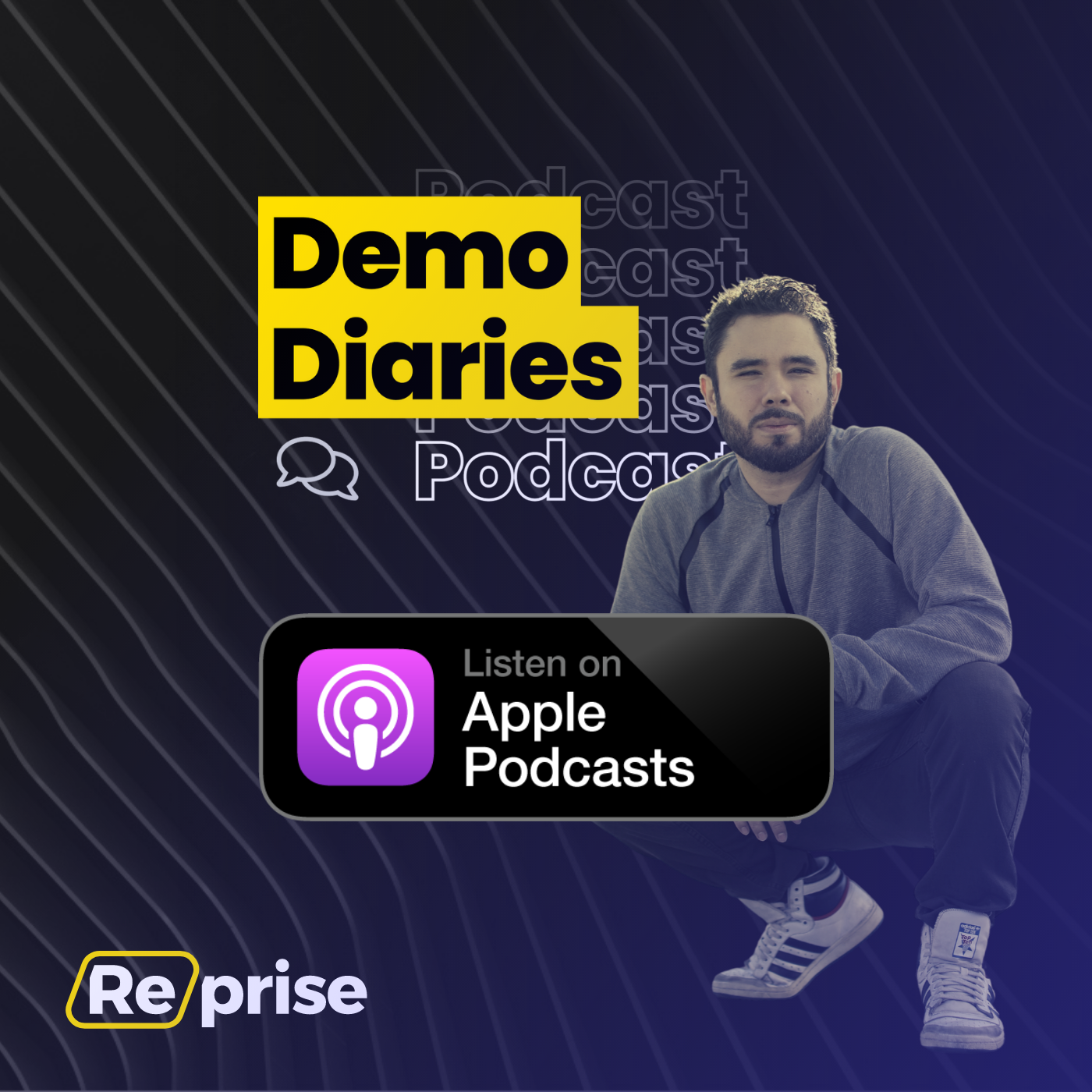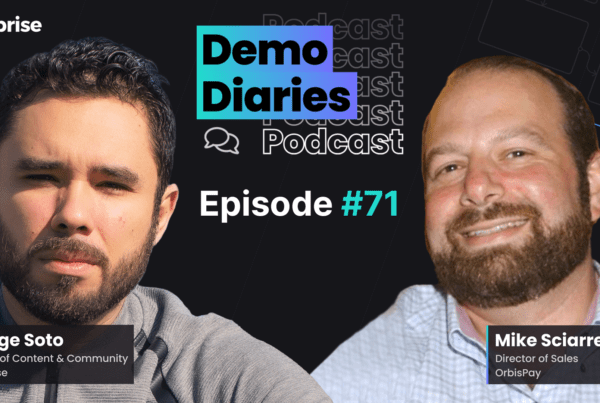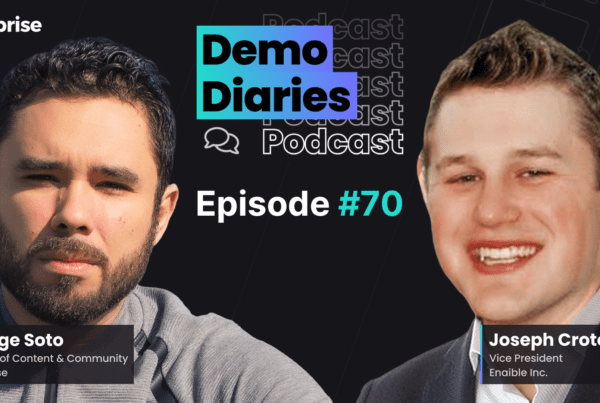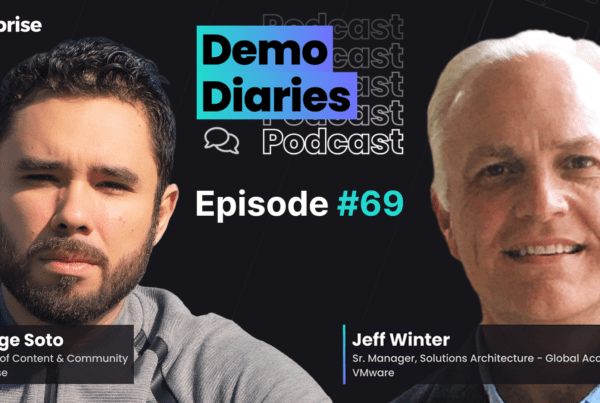More demo wisdom is coming your way – I talked to Tom Rozdeba, who was an early hire at Vidyard and is now a Solutions Consultant for the B2B video platform, on a recent episode of the Demo Diaries podcast!
He’s got a ton of learning and on-the-ground experience with demos at this point, and he shared it all in the episode. Here were my favorite takeaways.
Meet Tom
He took an unconventional path to get where he is today. Initially he was in operations management and project management, but quickly got bored and decided to make a change. He jumped into startups doing a little marketing and a bit of sales, and ended up in the grind of field sales. Looking for his next challenge, he found a friend of a friend at Vidyard and has been there for more than five years now.
How He Learned to Demo
Tom has taken many trainings to polish his sales and demo skills. Demo to Win was one of his favorites. He structures his demos based on their insights – with a memorable opening, a memorable closing, and segmented chapters in between.
He chapters his demos by beginning with getting discovery information from the AE if he wasn’t there for that part. (You won’t always get it, but it’s good to try.) What is most important to find out is the key items that are important to the people attending the demo – it could be video hosting, analytics, security, etc. Then he breaks out the demo by those key items and subpoints for each so everything is covered.
He also likes to have something creative in the opening, whether that’s a compelling customer story or a cool visual, as long as it’s something that will stick with them when they leave the room.
Structure is important because it’s really easy to just keep talking and dump features if the audience is quiet, so learning how to pause and see if what you said is resonating is vital.
Overcoming Objections
Demos are harder when people aren’t physically in the room together – we all know that pain by now. He does get a lot of people who feel since they’re attending a demo with a video company, they should have their video on, which helps, and he’ll ask them to turn it on if they’re comfortable as well. But if not, it’s ok.
This is when the pause in between chapters of the demo is especially important. He takes the chance to reiterate what he just showed them and ask if it’s resonating. Sometimes he’ll ask the AE to pop a technical question at that time to break it up and check for understanding too.
If he’s getting an objection and it’s a 180 from what he was told in discovery, he’ll be straightforward and ask the prospect what has changed. If Vidyard really isn’t a fit, that’s ok – and they can just part ways. But if other stakeholders are present, he’ll also ask them if they share those concerns to ensure expectations are aligned.
Vidyard isn’t right for everyone, so he’s not interested in trying to push a sale on someone who doesn’t see the value.
When SCs Get Involved
SInce Vidyard works with companies and makes deals of all different sizes, from tiny to enterprise, there need to be some guidelines on when SCs get involved. He has a brief form he asks AEs to fill out when they request an SC to get baseline context. It asks three questions:
- Who are we talking to?
- Why did they raise their hand?
- What do they want as an outcome?
If the AE can’t answer these questions, no SC comes to the deal. Maybe they record an asynchronous video to create a more pleasant experience, but those questions are the minimum info needed so he can determine how complex the use case is and who’s in the room to prep and mock up accurately. It’s hard to draw the line otherwise and he tries to be flexible.
Video in Sales and Marketing in 2021
This is the year of 1:1 asynchronous video – Tom even uses them to sync with his AE to prep for a demo with a 30-60 second video. Video can be used anywhere to communicate anything, even just how to reset your password in a piece of software.
As people get over the fear of being on camera and on Zoom, these short sweet videos made in the moment will start to replace those more polished pre-recorded content that isn’t personalized.
Watch the full episode here:






